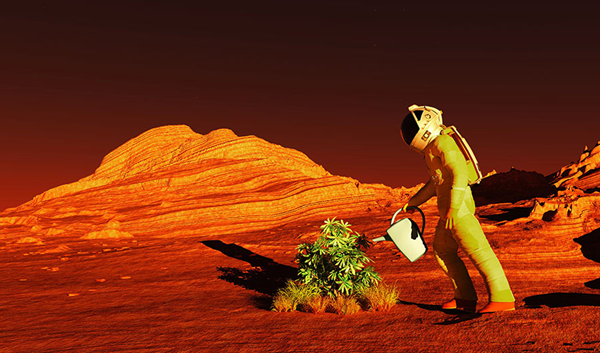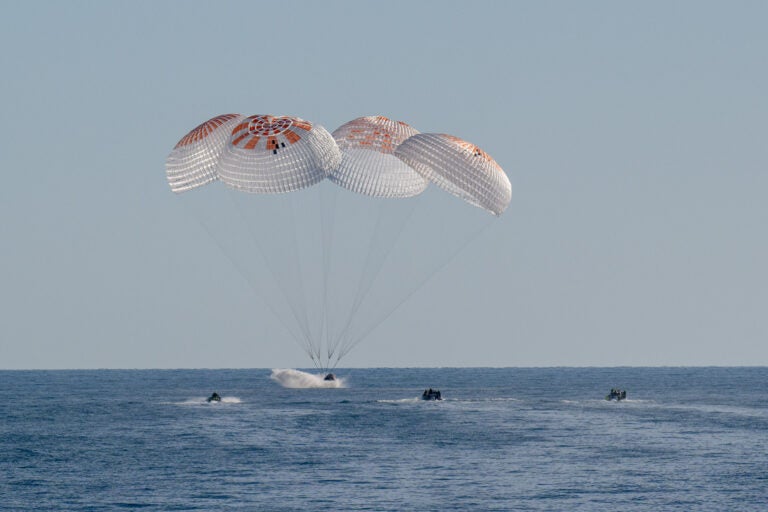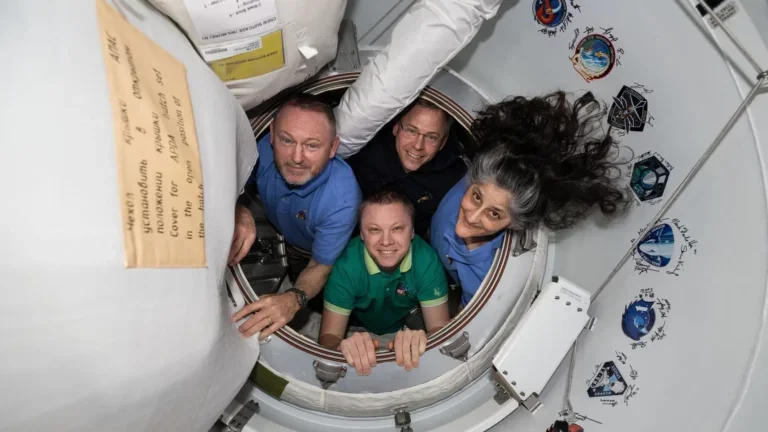(Inside Science) — What would it take for humans to live on Mars? The first step is to successfully get people to the red planet, of course. Once there, the astronauts would face a task that could be even more difficult: figuring out how to survive in an environment that is vastly different from Earth’s. A new study demonstrates one of the challenges — Earth’s plants don’t grow as well when exposed to the level of radiation expected on Mars.
Wieger Wamelink, an ecologist at Wageningen University in the Netherlands who describes himself as a space farmer, has been frustrated by sci-fi depictions of growing plants on Mars. “What you often see is that they do it in a greenhouse,” he said, “but that doesn’t block the cosmic radiation,” which consists of high-energy particles that may alter the plants’ DNA. Mars lacks the same degree of protection from cosmic radiation that the Earth’s atmosphere and magnetic field provide. To prove his suspicion that cosmic radiation could be dangerous to plants, Wamelink decided to test the hypothesis himself.
First, Wamelink and his team had to recreate the cosmic radiation. The team settled on using gamma rays generated by radioactive cobalt, even though the actual cosmic radiation that bombards Mars’ surface consists of various types of radiation, including alpha and beta particles. But, generating alpha and beta rays on Earth is much more difficult, Wamelink said. It would require a particle accelerator, which Wamelink would love to use, “but I would have to put some plants in the collider for, let’s say, two or three months.” Considering the high demand for the equipment, “I think it’s not ever going to happen,” he said.
Once Wamelink and his team secured radioactive cobalt, the team grew rye and garden cress in two groups: one with typical growing conditions and the other had similar conditions but added gamma radiation. Four weeks after germination, the scientists compared the two groups and saw that the leaves of the group exposed to gamma rays had abnormal shapes and colors. The weights of the plants also differed; the rye plants in the gamma-ray group weighed 48% less than the regular group, and the weight of the garden cress exposed to gamma rays was 32% lower than their unblasted counterparts. Wamelink suspects the weight difference is due to the gamma rays damaging the plants’ proteins and DNA. The results were published in the journal Frontiers in Astronomy and Space Sciences this month.
Michael Dixon, who studies agriculture at the University of Guelph in Canada and wasn’t involved in the study, said this research did a reasonable job replicating the cosmic radiation considering that it’s impossible to copy it perfectly. Ultimately, researchers would need to study plants on the Martian surface to get a full understanding of the impacts.
Dixon is a part of a team that’s planning to attempt to grow barley on the Moon, which should happen in the next ten years, he said. One of the first questions that Dixon and his co-workers plan to study is whether or not plants can survive the exposure to lunar radiation.
Wamelink said space agencies should step up their research into crops to improve the quality of the food that astronauts eat. “People at ISS [International Space Station] still eat astronaut food. And that’s not very nice,” Wamelink said. “I don’t know if you ever tasted it, but, well, you don’t get happy from it.”
Researching space farming and food production is “way more important than some people think,” he said. “Radiation is a problem, but it’s solvable, I think.”
This story was originally published with Inside Science. Read the original here.










